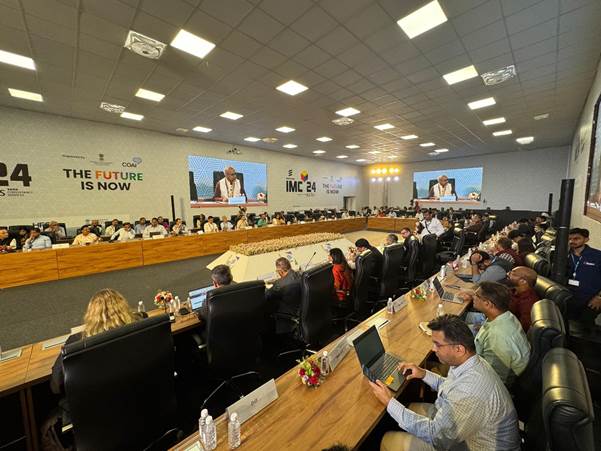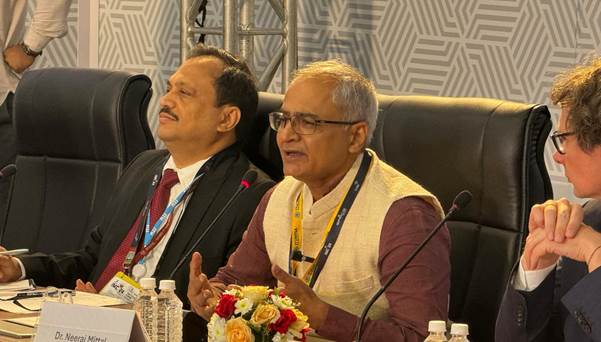ITU-UN Workshop Explores Role of Standardization and Emerging Technologies in Disaster Risk Reduction
The ITU-UN Disaster Risk Reduction workshop themed “Reimagining Disaster Risk Reduction: The Role of Standardization and Innovative Technologies,” event took place yesterday bringing together experts from various fields to explore how advanced technologies can enhance disaster management. The workshop called for deeper cross-sector collaboration to harness the power of emerging technologies and standardized approaches to tackle critical disaster-related challenges.
The session featured opening remarks from Dr. Neeraj Mittal, Secretary, Department of Telecommunications who said, “Today technology is converging so rapidly in terms of its capabilities, platforms and devices, that the day is not far away when maybe a single technology can do everything, that is trend I can see going forward.” On the subject of disaster mitigation, he mentioned “telecom is a horizontal technology on which all other technologies are highly dependent and therefore this is the right moment to sit down and discuss all these issues”. He further highlighted that lot of early warning systems have been developed in India preventing a lot of disasters like cell broadcast technology which has been developed by C-DoT, only the second vendor in the world. He concluded by saying we should use all the available technologies to reduce the risk posed by disasters to humanity.

The workshop focused on showcasing the transformative potential of emerging technologies such as artificial intelligence (AI), big data, digital twins, drones, remote sensing, and blockchain in mitigating the impact of disasters. Participants discussed how these technologies can improve prediction accuracy, optimize response times, and streamline recovery efforts. Central to the discussions was the role of standardization in integrating these innovations to enhance global resilience against disasters.
Tomas Lamanauskas, Deputy Secretary-General, ITU remarked “Disasters are unfortunately increasing in both frequency and intensity. Both traditional & advanced / emerging technologies like Satellites, AI can surely help but they are also vulnerable. ITU as an organisation has a lot of activities in this regard. It is monitoring from space as well as providing for an emergency telecommunications cluster to make sure communications are working when the natural calamities hit us.”
A keynote presentation by the World Meteorological Organization (WMO) followed, where they highlighted the critical role data-driven solutions are playing in advancing disaster predictions and responses, ultimately saving lives and reducing damage.
The workshop focused on showcasing the transformative potential of emerging technologies such as artificial intelligence (AI), big data, digital twins, drones, remote sensing, and blockchain in mitigating the impact of disasters. Participants discussed how these technologies can improve prediction accuracy, optimize response times, and streamline recovery efforts. Central to the discussions was the role of standardization in integrating these innovations to enhance global resilience against disasters.
The workshop concluded with a call for deeper cross-sector collaboration to harness the power of emerging technologies and standardized approaches. By fostering cooperation between industries, governments, and international organizations, participants emphasized the importance of ensuring that communities worldwide are better prepared and more resilient to natural disasters.
The ITU-UNDRR workshop drew a broad range of key stakeholders, including policymakers, disaster management experts, and representatives from global organizations, all committed to advancing the use of technology and standardization in building disaster resilience.

